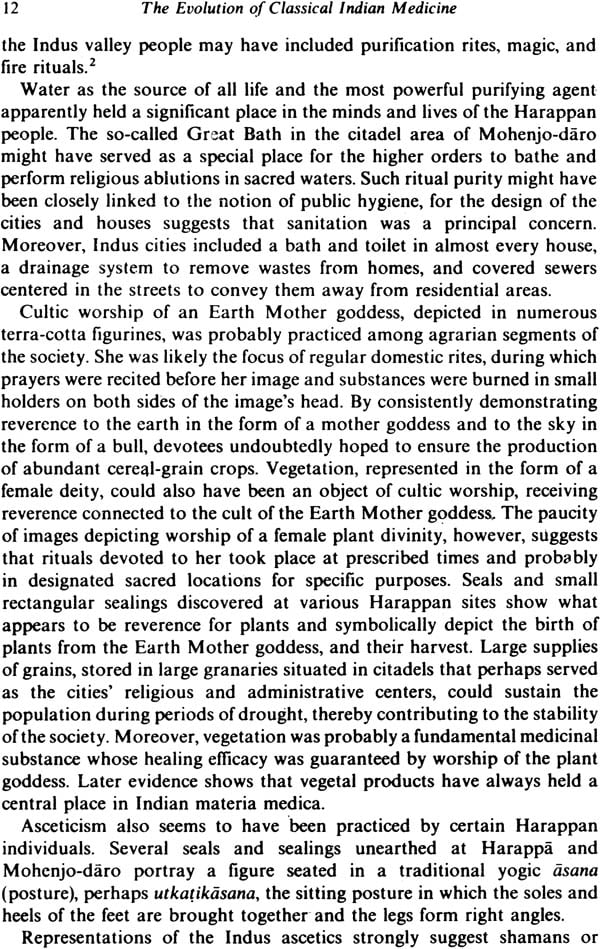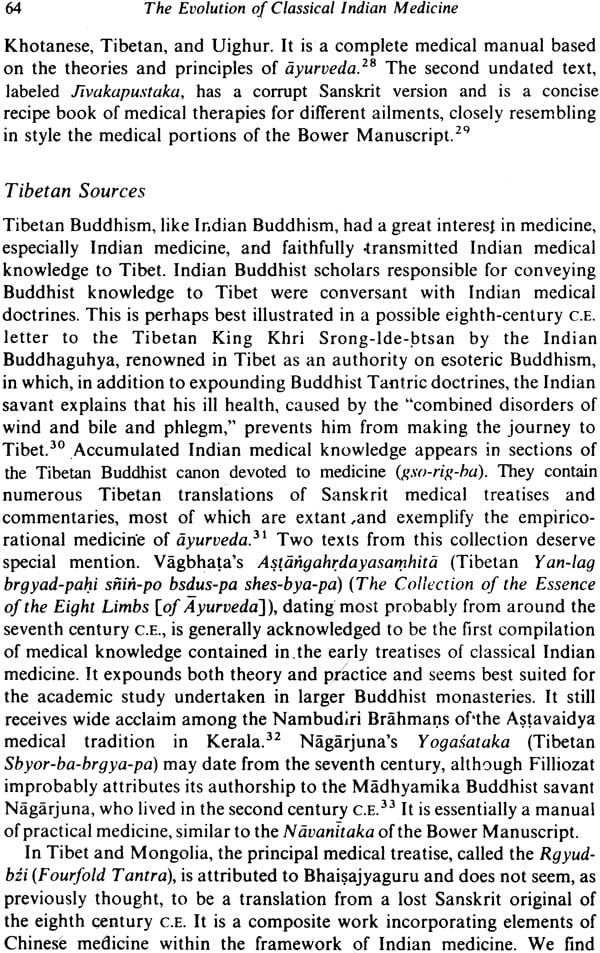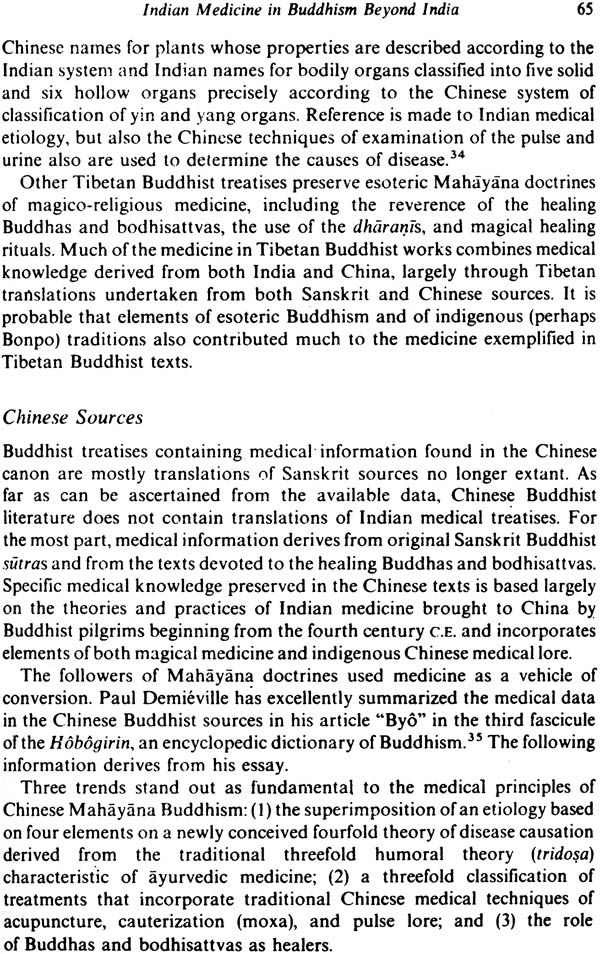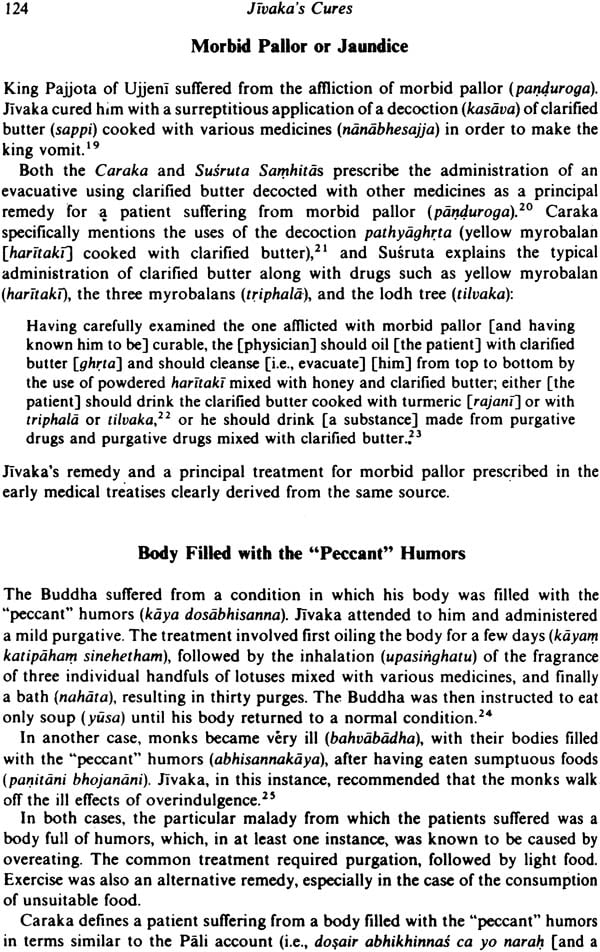
Asceticism and Healing in Ancient India (Medicine in the Buddhist Monastery)
Book Specification
| Item Code: | IDK126 |
| Author: | Kenneth G. Zysk |
| Publisher: | MOTILAL BANARSIDASS PUBLISHERS PVT. LTD. |
| Language: | English |
| Edition: | 2021 |
| ISBN: | 9788120815285 |
| Pages: | 200 |
| Cover: | Paperback |
| Other Details | 8.6" X 5.6" |
| Weight | 280 gm |
Book Description
Preface
Human susceptibility to illness and injury suggests and extensive reading of Indian literature confirms that medical lore touched the lives of almost all Indians from Vedic Aryans to moderns in cosmopolitan or traditional settings. Ancient treatises, Hindu and non-Hindu alike, contain numerous metaphors, similes, and references to disease and healing. Although Hinduism tended to emphasize spiritual and ultimate reality, Indians throughout the centuries remained acutely aware of the physical factors that affected their existence and cut short their period of life on earth. Efforts in ancient India to subjugate, control, and understand these phenomena is order to mitigate their harmful effects and prolong one's earthly existence gave rise to a long tradition of healing arts that found expression in many types of religious and secular literature.
My own exploration of ancient Indian medical lore starts from its earliest beginnings and traces its development through the centuries in order to discover the roots of India's traditional system of medicine, ayurveda (the science of longevity). The following pages, which present the results of this investigation, offer a picture of ancient Indian medical history radically different from the one commonly portrayed. The sources show that the Hindu sastric tradition of medicine derived its major features from the work of heterodox ascetics rather than from brahmanic intellectuals and that the significant growth of Indian medicine took place in early Buddhist monastic establishments. In addition to forming the basis for a new history of medicine in ancient India, these findings should importantly advance our understanding both of the transmission and authorization of certain forms of knowledge through the sastras and of the social history of Buddhism in India and throughout Asia. This presentation of Indian medical history will likely stimulate controversy, particularly among those who ascribe the origins of ayurveda to traditional brahmanic orthodoxy, and thereby contribute to a better and deeper understanding of India's medical heritage.
It is now my pleasant duty to thank those who have helped to bring this work to fruition. NIH Grant LM 04514 from the National Library of Medicine provident substantial funding for research and writing of the book from 1986 to 1988, and a Research Assistance Grant from the American Academy of Religion facilitated completion of the project. I deeply appreciate the support afforded me from these two institutions.
I am also grateful to several individuals who read all or part of the manuscript and made valuable comments. The foremost authority on ayurveda, Jan Meulenbeld, formerly of the State University of Groningen, made critical comments that corrected several errors and contributed to tighter arguments. J. W. de Jong of the Australian National University and Richard Gombrich of Oxford University, drawing on their deep knowledge of Indology and Buddhims, offered several insightful suggestions that improved the work's scholarly content. Stanley Insler of Yale University and David Pingree of Brown University caused me to rethink several arguments pertinent to my thesis. James Waltz of Eastern Michigan University read the entire text, raising scholarly questions and offering suggestions that greatly enhanced the book's general presentation. The views and ideas of these individuals, although not always adopted, were always considered and contributed to a surer grasp of the issues involved and a better understanding of the texts and their contents used throughout the book. To these and all individuals who looked at parts of the manuscript or who listened to me talk about the project and offered suggestions along the way, I am most grateful. Finally, I appreciate the constant support and encouragement given me by my wife, Adriana Berger, during the latter stages of the project.
| Introduction | 3 | |
| I. | The Evolution of Classical Indian Medicine | |
| 1. | The Beginnings of Indian Medicine: Magico-religious Healing | 11 |
| 2. | Heterodox Asceticism and the Rise of Empirico-rational Medicine | 21 |
| 3. | Medicine and Buddhist Monasticism | 38 |
| 4. | Indian Medicine in Buddhism Beyond India | 50 |
| II. | The Content of Early Buddhist Monastic Medicine | |
| 5. | Materia Medica | 73 |
| 6. | Stories of Treatments Based on Cases of Diseases | 84 |
| Conclusion | 117 | |
| Appendix I: | Jivaka's Cures | 120 |
| Appendix II: | Glossary of Pali and Sanskrit Plant Names | 128 |
| Notes | 133 | |
| Bibliography | 168 | |
| Index of Sanskrit and Pali Words | 183 | |
| General Index | 195 |













